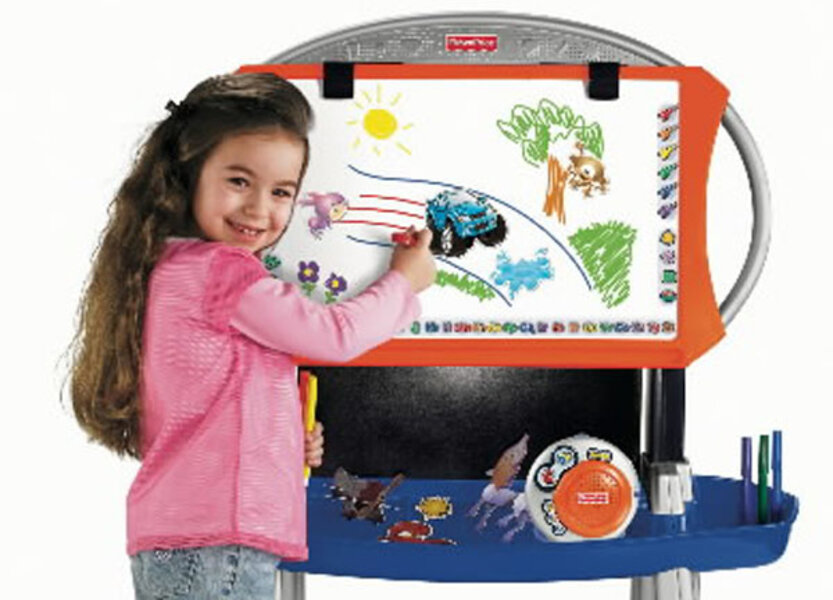Media literacy for preschoolers: Parenting a savvy viewer
Loading...
Media literacy is a concept that’s often taught in schools – though not often enough, in my opinion. Being media literate means having the ability to think critically about media content, as well as an understanding of how the media work. It also encompasses knowing how to create media texts yourself.
RELATED: Top 5 parenting tips for media literacy in preschoolers
So, students in middle school who are learning about media literacy might be asked to think about who produced a certain media text (advertisement, movie, television show, etc.) and why. They might be asked to contemplate about whether they agree with the content – with the messages and values it conveys. For example, is an ad or program portraying certain people in stereotypical ways? If so, what problems do they see with that practice? In some programs, they might even be handed a digital video recorder and taught how to edit their footage together on a laptop, to create their own advertisement about something they care about.
Although most research about media literacy focuses on children’s classroom experiences, I believe it’s never too early to begin fostering media literacy. Media literacy can happen at home. Parents can talk with their preschoolers about the media in age-appropriate ways, giving them tools to help them think critically.
Unfortunately, there’s not much research out there on parent-based media literacy – but from speaking with other parents, I know it’s happening in a lot of homes. Now, some families may not think of the conversations they have with their little ones about the media as “media literacy.” It’s not a term that everyone is familiar with, after all. But if you’re talking with your child about what is happening on screen, and why, chances are you’re helping your child become a media literate individual.
My son is four years old. A couple of years ago, we suspended our DirecTV subscription and experimented with using Hulu, Netflix, Amazon Prime, and other internet-based sources for watching television content on our TV set. The results were great: for a fraction of the cost, we were still able to access 99% of the content we enjoyed.
Because we didn’t miss “regular” television, we canceled our DirecTV subscription altogether and never looked back. (This worked well for us, but I’m sure it’s not for everyone…your mileage may vary!)
As a result, since the age of two, our son has mostly watched programs available on Netflix. Shows like "Sesame Street," "Blues Clues," "The Wonder Pets," "Thomas and Friends," "Dragon Tales," "Dora the Explorer" – they’re all there, and commercial-free. We also watch "Mister Rogers Neighborhood" through Amazon Prime and assorted movies, like "Monsters, Inc," "Tangled," and "My Neighbor Totoro" on DVD.
I appreciate that anything our child views is deliberately selected by or for him. There’s no segueing from one show to the next all afternoon long on a single channel with him suddenly watching something he shouldn’t. (Except that one time he was trying to click on "Bob the Builder" but accidentally turned on "Doctor Who," instead… It took me a minute or two to realize it, and he saw some scary-looking aliens before we could turn off the screen. Oops.)
This also means that the commercials my son has been exposed to have been very limited. He sees the previews on DVDs before he gets to the feature film, and sometimes he sees regular ads on Hulu or YouTube, too.
One day, when he was about three, he complained about a commercial coming on screen instead of whatever it was we were actually trying to watch. I thought for a minute, then used it as an early media literacy moment, saying: “Yeah. Commercials just try to sell us things we don’t need.”
That became my stock explanation for what was happening when commercials came on screen: “This commercial is trying to sell us things we don’t need!” Sometimes, he would echo me in an indignant little voice: “Yeah! We don’t need those things!”
My son is four now, and just this week, he was watching a "Thomas and Friends" DVD in the living room. I’d popped it in the DVD player per his request and went into the kitchen to work on a few things. Next thing I knew, he was calling out to me, really annoyed: “Mom-meeee! This commercial is trying to sell me Bob the Builder. I don’t NEED Bob the Builder!!!”
Score one for mommy!
I love that my preschooler has a basic understanding of how advertisements work. He knows that they exist to sell things. Television ads are not neutral purveyors of information; they have an angle, an agenda. They’re trying to get us to do something–to buy something.
RELATED: Top 5 parenting tips for media literacy in preschoolers
Considering how relentlessly marketers target kids nowadays, it’s really important for kids to be armed with this basic understanding.
The Christian Science Monitor has assembled a diverse group of the best family and parenting bloggers out there. Our contributing and guest bloggers are not employed or directed by the Monitor, and the views expressed are the bloggers' own, as is responsibility for the content of their blogs. Rebecca Hains blogs at rebeccahains.wordpress.com.








